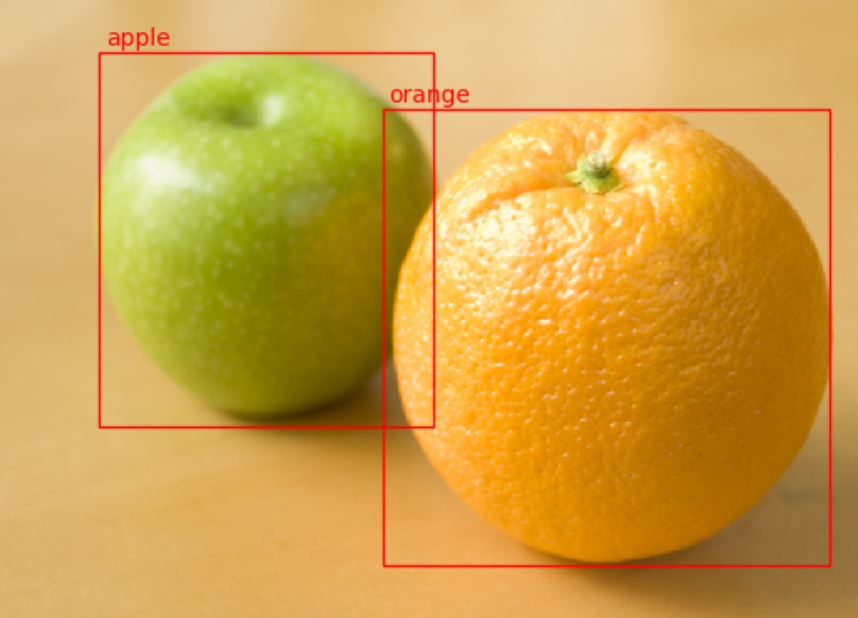alankbi / Detecto
Programming Languages
Projects that are alternatives of or similar to Detecto
Detecto is a Python package that allows you to build fully-functioning computer vision and object detection models with just 5 lines of code. Inference on still images and videos, transfer learning on custom datasets, and serialization of models to files are just a few of Detecto's features. Detecto is also built on top of PyTorch, allowing an easy transfer of models between the two libraries.
The table below shows a few examples of Detecto's performance:
| Still Image | Video |
|---|---|
 |
 |
Installation
To install Detecto using pip, run the following command:
pip3 install detecto
Installing with pip should download all of Detecto's dependencies automatically. However, if an issue arises, you can manually download the dependencies listed in the requirements.txt file.
Usage
The power of Detecto comes from its simplicity and ease of use. Creating and running a pre-trained Faster R-CNN ResNet-50 FPN from PyTorch's model zoo takes 4 lines of code:
from detecto.core import Model
from detecto.visualize import detect_video
model = Model() # Initialize a pre-trained model
detect_video(model, 'input_video.mp4', 'output.avi') # Run inference on a video
Below are several more examples of things you can do with Detecto:
Transfer Learning on Custom Datasets
Most of the times, you want a computer vision model that can detect custom objects. With Detecto, you can train a model on a custom dataset with 5 lines of code:
from detecto.core import Model, Dataset
dataset = Dataset('custom_dataset/') # Load images and label data from the custom_dataset/ folder
model = Model(['dog', 'cat', 'rabbit']) # Train to predict dogs, cats, and rabbits
model.fit(dataset)
model.predict(...) # Start using your trained model!
Inference and Visualization
When using a model for inference, Detecto returns predictions in an easy-to-use format and provides several visualization tools:
from detecto.core import Model
from detecto import utils, visualize
model = Model()
image = utils.read_image('image.jpg') # Helper function to read in images
labels, boxes, scores = model.predict(image) # Get all predictions on an image
predictions = model.predict_top(image) # Same as above, but returns only the top predictions
print(labels, boxes, scores)
print(predictions)
visualize.show_labeled_image(image, boxes, labels) # Plot predictions on a single image
images = [...]
visualize.plot_prediction_grid(model, images) # Plot predictions on a list of images
visualize.detect_video(model, 'input_video.mp4', 'output.avi') # Run inference on a video
visualize.detect_live(model) # Run inference on a live webcam
Advanced Usage
If you want more control over how you train your model, Detecto lets you do just that:
from detecto import core, utils
from torchvision import transforms
import matplotlib.pyplot as plt
# Convert XML files to CSV format
utils.xml_to_csv('training_labels/', 'train_labels.csv')
utils.xml_to_csv('validation_labels/', 'val_labels.csv')
# Define custom transforms to apply to your dataset
custom_transforms = transforms.Compose([
transforms.ToPILImage(),
transforms.Resize(800),
transforms.ColorJitter(saturation=0.3),
transforms.ToTensor(),
utils.normalize_transform(),
])
# Pass in a CSV file instead of XML files for faster Dataset initialization speeds
dataset = core.Dataset('train_labels.csv', 'images/', transform=custom_transforms)
val_dataset = core.Dataset('val_labels.csv', 'val_images') # Validation dataset for training
# Create your own DataLoader with custom options
loader = core.DataLoader(dataset, batch_size=2, shuffle=True)
model = core.Model(['car', 'truck', 'boat', 'plane'])
losses = model.fit(loader, val_dataset, epochs=15, learning_rate=0.001, verbose=True)
plt.plot(losses) # Visualize loss throughout training
plt.show()
model.save('model_weights.pth') # Save model to a file
# Directly access underlying torchvision model for even more control
torch_model = model.get_internal_model()
print(type(torch_model))
For more examples, visit the docs, which includes a quickstart tutorial.
Alternatively, check out the demo on Colab.
API Documentation
The full API documentation can be found at detecto.readthedocs.io. The docs are split into three sections, each corresponding to one of Detecto's modules:
Core
The detecto.core module contains the central classes of the package: Dataset, DataLoader, and Model. These are used to read in a labeled dataset and train a functioning object detection model.
Utils
The detecto.utils module contains a variety of useful helper functions. With it, you can read in images, convert XML files into CSV files, apply standard transforms to images, and more.
Visualize
The detecto.visualize module is used to display labeled images, plot predictions, and run object detection on videos.
Contributing
All issues and pull requests are welcome! To run the code locally, first fork the repository and then run the following commands on your computer:
git clone https://github.com/<your-username>/detecto.git
cd detecto
# Recommended to create a virtual environment before the next step
pip3 install -r requirements.txt
When adding code, be sure to write unit tests and docstrings where necessary.
Tests are located in detecto/tests and can be run using pytest:
python3 -m pytest
To generate the documentation locally, run the following commands:
cd docs
make html
The documentation can then be viewed at docs/_build/html/index.html.
Contact
Detecto was created by Alan Bi. Feel free to reach out on Twitter or through email!
